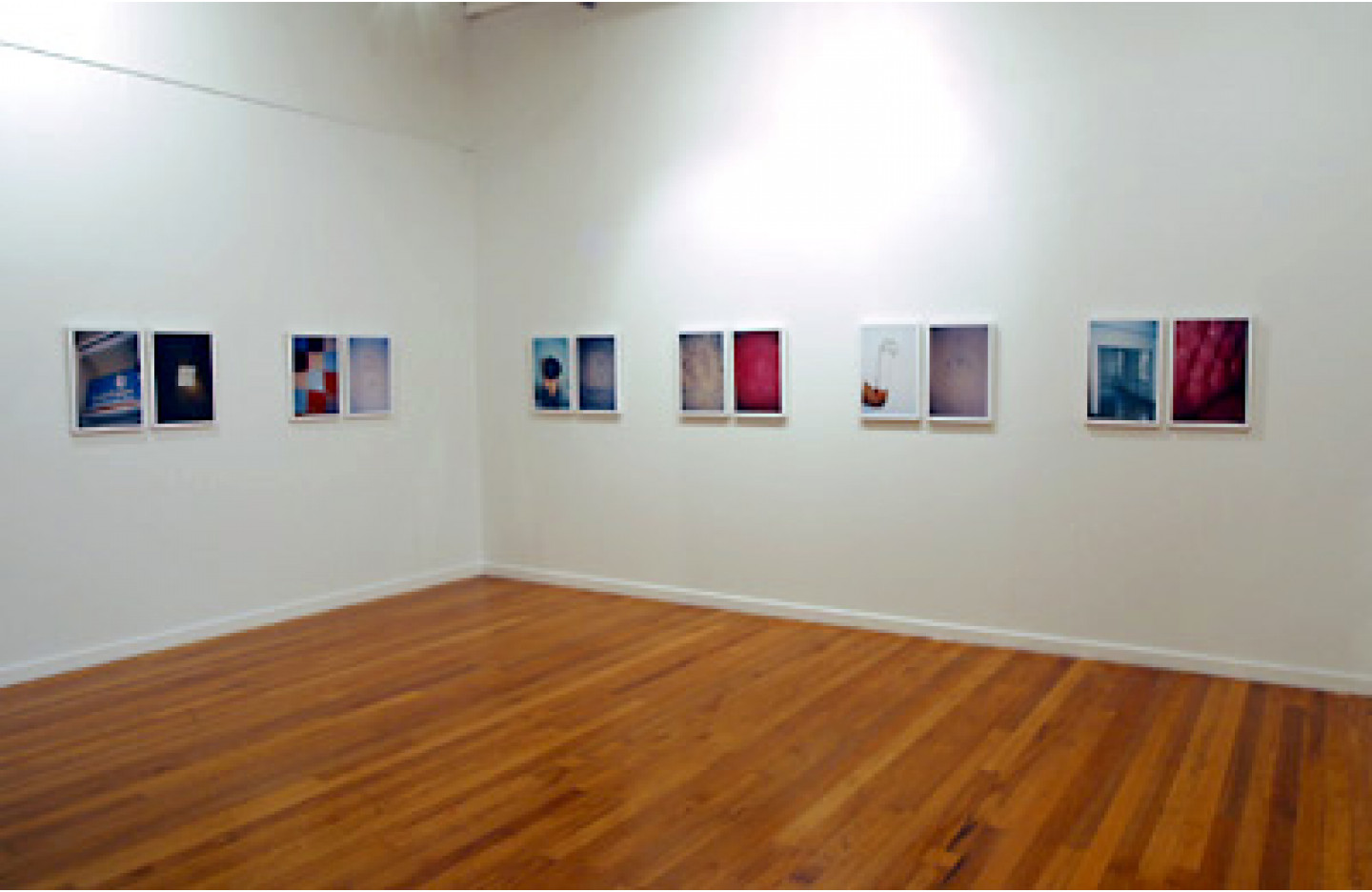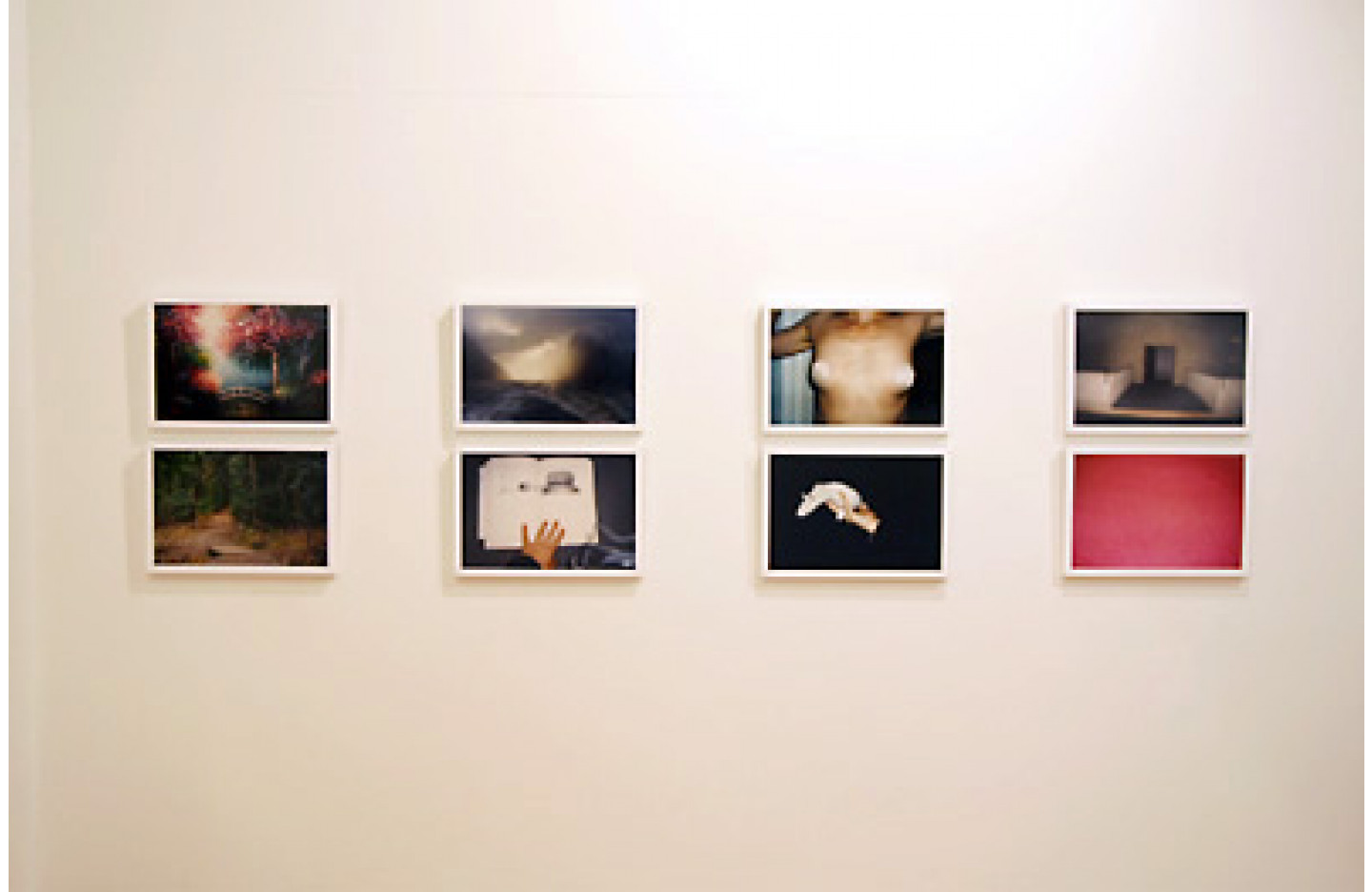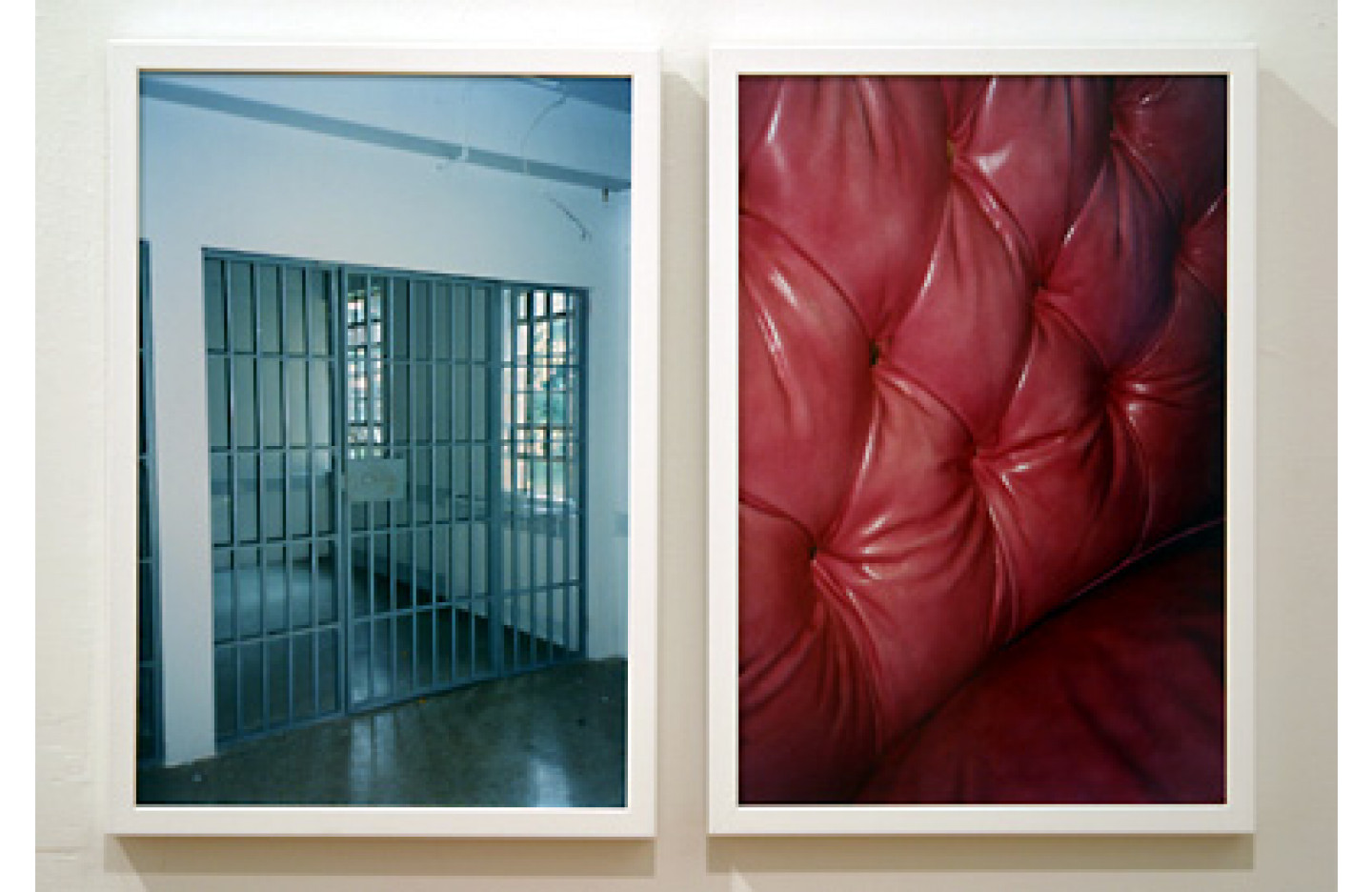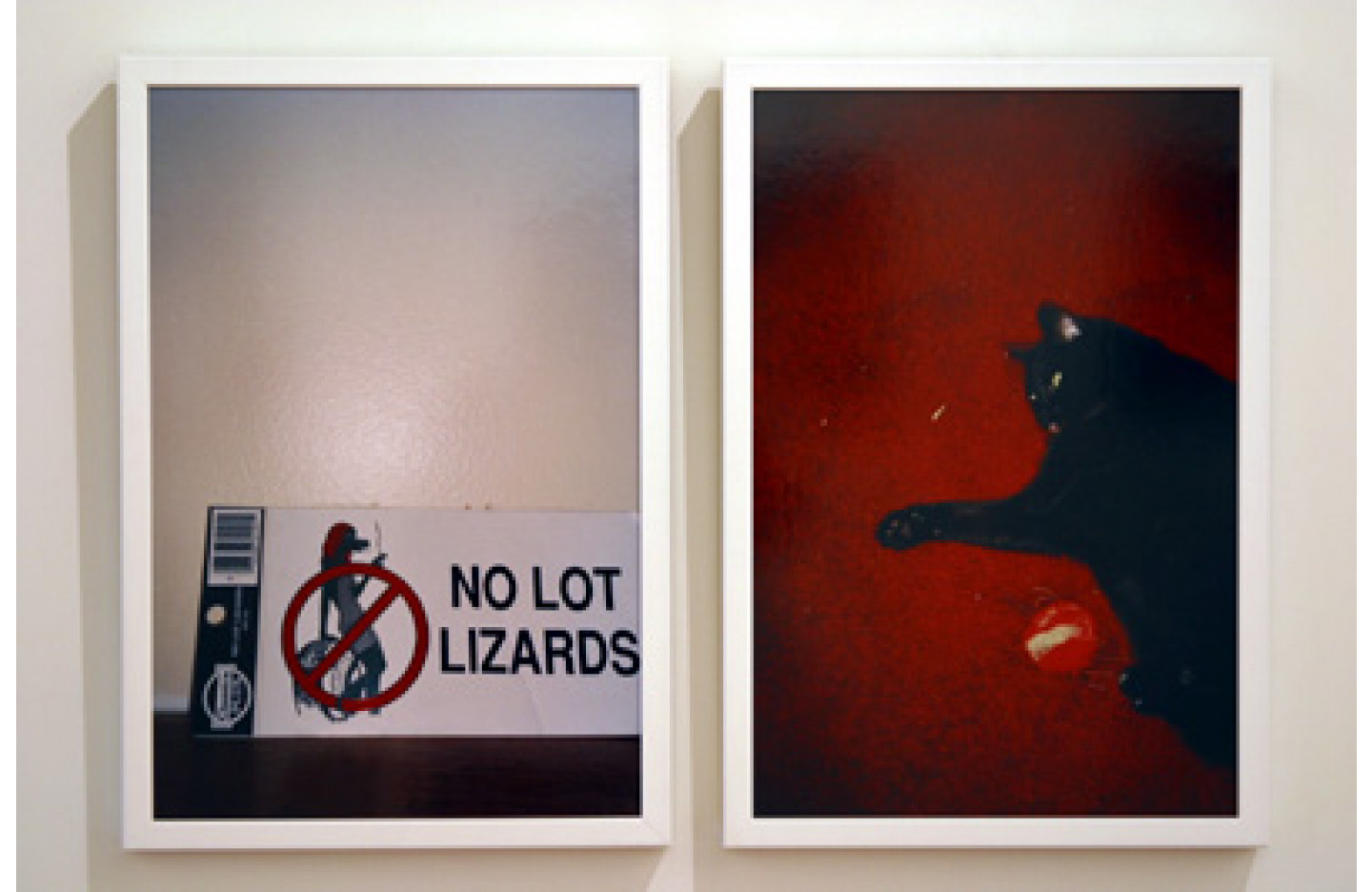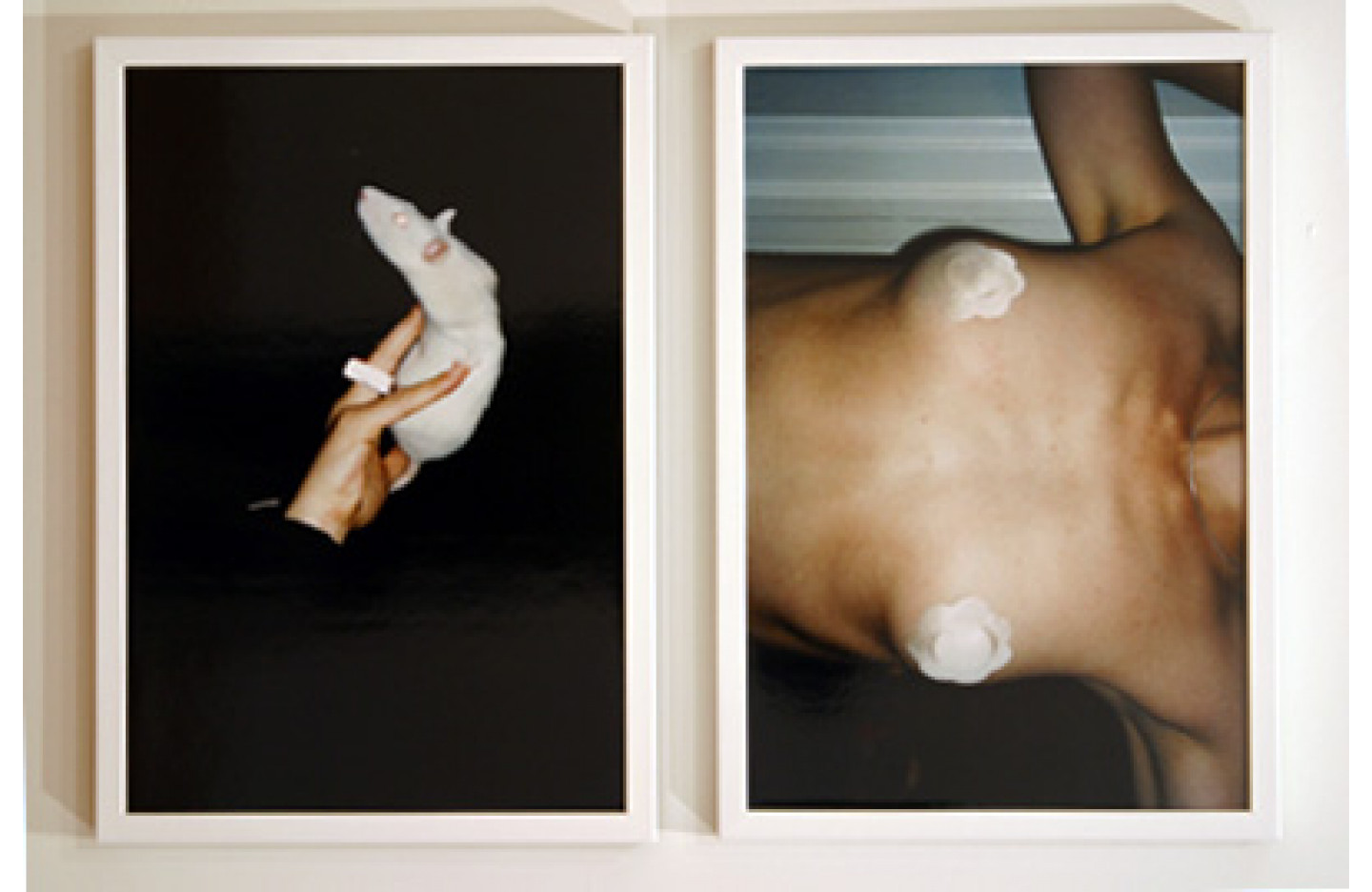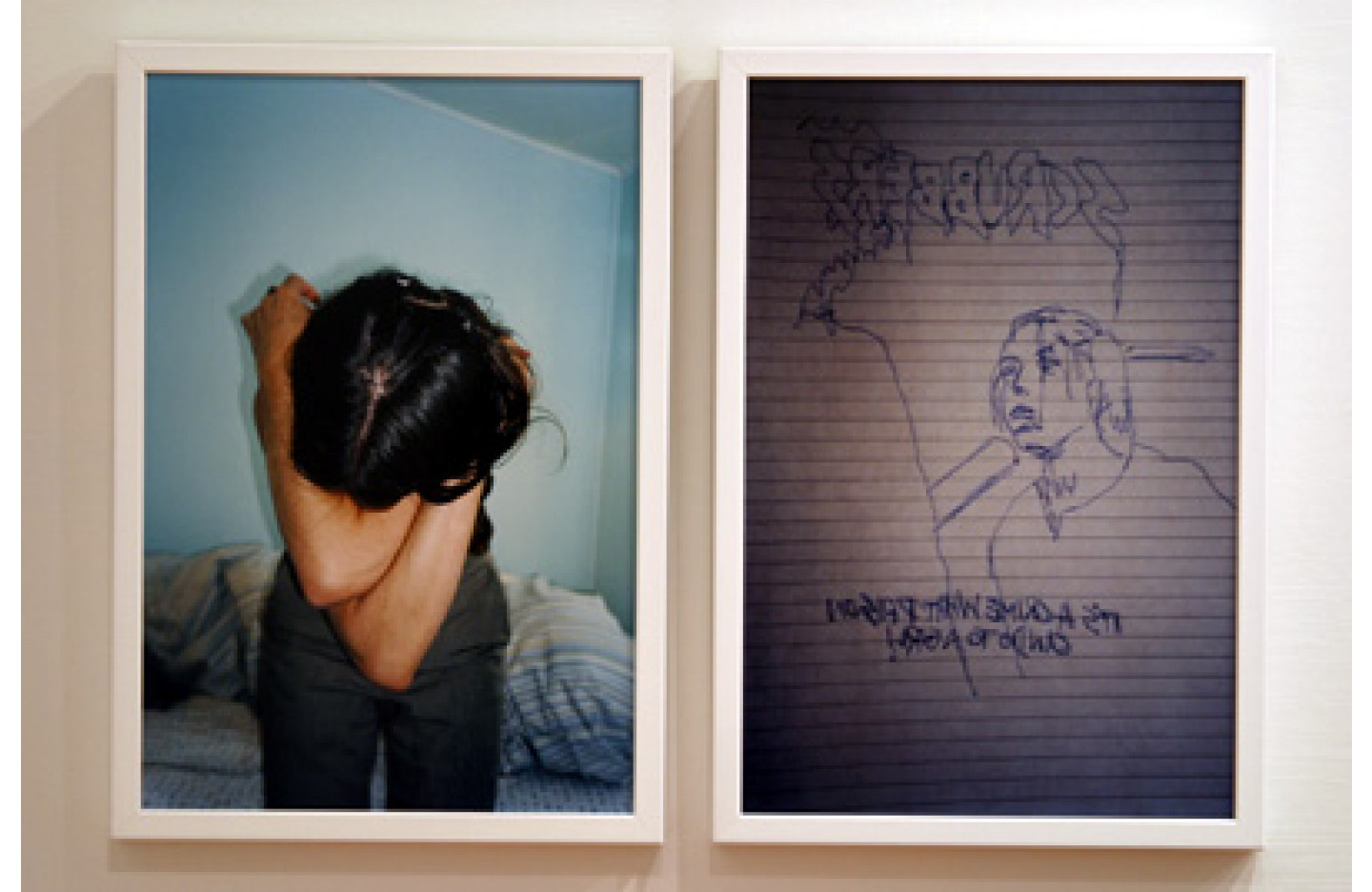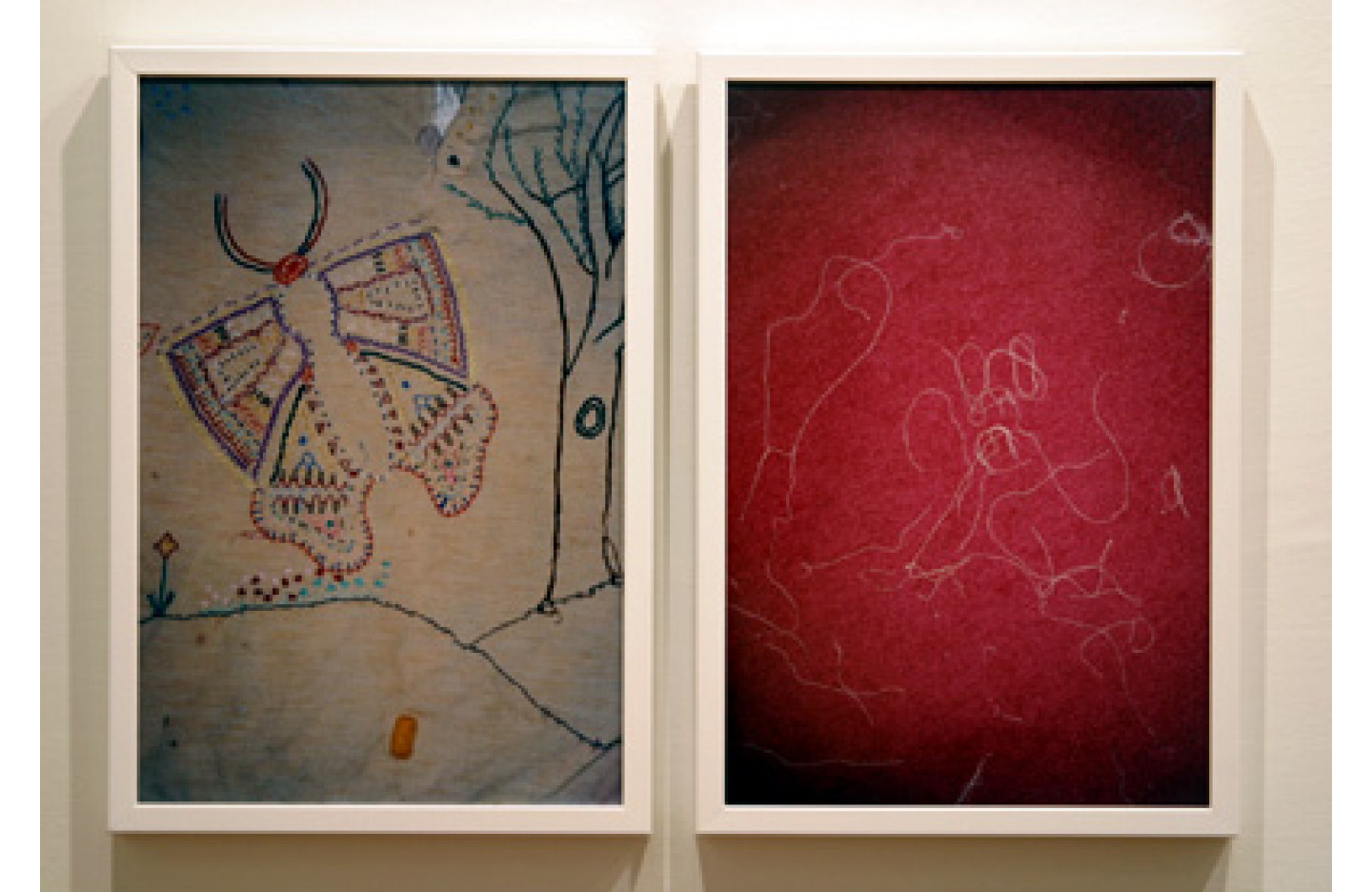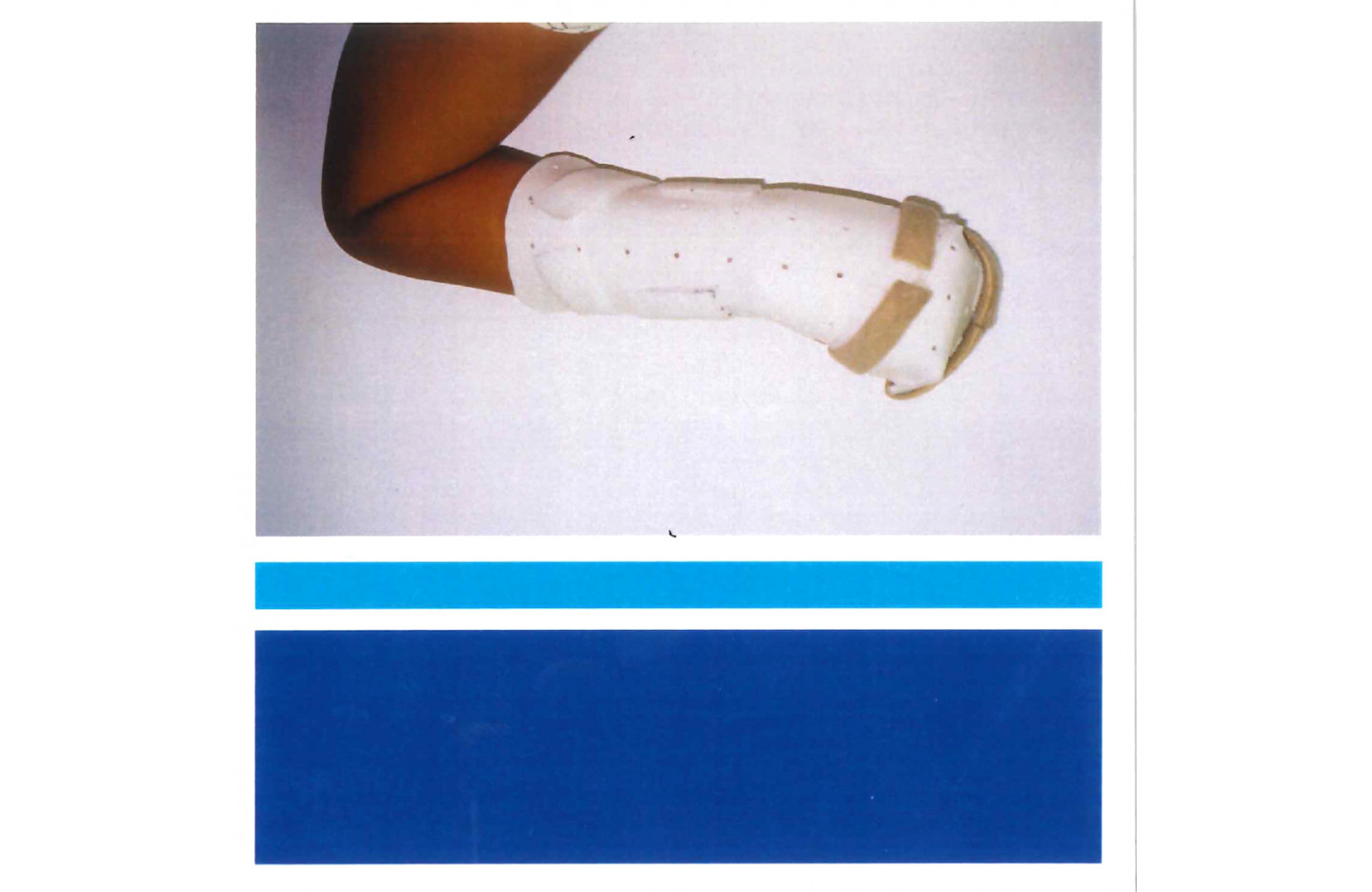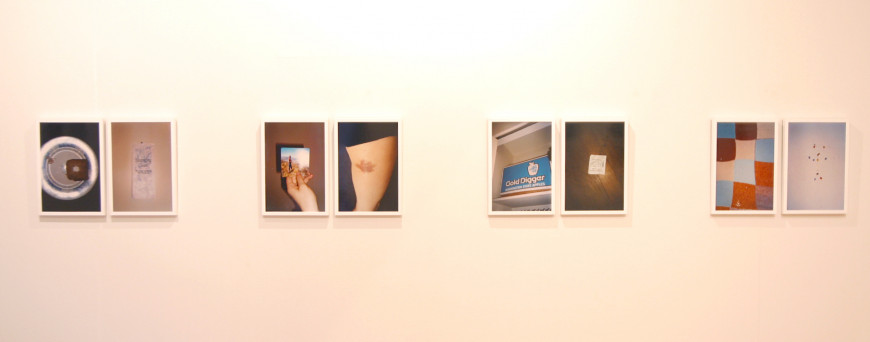Erewhon
- 5 Nov - 22 Nov, 2002
Remind yourself of fictional languages. Speak in tongues. Long walks down corridors mean beheading by force of rope. Remember hangman as a child. 'Pin up.' Fear the inevitable. If it will happen you should be scared. 'If she looks questionable do not open the door. No Lot Lizards, thank you.'
This comes from a short text by Canadian writer Aaron Peck. Peck's text responds to Ann Shelton's interpretation of Michel Foucault's Technologies of the Self, which forms part of the conceptual background for her series Erewhon. As a writer, it's interesting reading this, an interpretation of the same photographs I'm writing about here, only by a guy on the other side of the world. So our stories about Shelton's work happen somewhere between here and there, which is kind of nice because the series itself is about a sense of in-between-ness.
The series takes as its starting point Samuel Butler's 1872 novel Erewhon. Butler describes Erewhon, an outpost of the British Empire where sickness is a crime punishable by hard labour. So on the one hand, it's a kind of utopia for settlers, but the price of that lifestyle is the ritualistic conformity its rules impose. This reversal, this transformation of utopia into dystopia is mirrored by the place-name - 'Erewhon' is an anagram of 'Nowhere'. So as Shelton points out, Butler's narrative 'exists in territories of unknown geographic origins.' Her photos are like this too, the result of her traveling between two countries, Canada and New Zealand, both of them former colonial outposts of the British Empire. So like Butler's, Shelton's Erewhon explores geographical dislocation and the pathology of extremes like utopia/dystopia, crime/punishment, rules/transgression, reality/fiction.
Shelton is probably best known for Redeye, a documentary project based on exhibition openings and their after-effects in Auckland around the time Teststrip and Fiat Lux were showing the New Zealand art scene the potential of artist-run spaces. The images are of artists and their friends, taken in a fairly brutal 'documentary' style - rugged, front-on 35mm snapshots. She says that: 'Öwhat I wanted to do was create a complex identity for a cultural milieu which I was part of.' But the critical attention Redeye got turned it more into spectacle than documentary. For instance, Justin Paton wrote that it illustrated 'the tribal rites of the young and the restless'. One museum claimed in a flyer that it was photos of prostitutes and junkies. So the wider art community drummed it up. Partly, this was because it was about a sub-culture, an alternative group of young artists which people outside that scene found fascinating but kind of terrifying too. Related to this sense of 'exposure' and spectacle is the fact that all the artists photographed in Redeye are recognisable. Flicking through the book, we can see Giovanni Intra, Daniel Malone, David Townsend, Fiona Amundsen. Shelton didn't really do anything to obscure her subjects. What's interesting is that since then, there haven't been many people in her photographs. As Tessa Laird points out, her more recent works have been 'narratives without protagonists'. So the unintended exoticising of Redeye has meant that Shelton has since tried to explore the relationship between narrative and documentary in more subversive ways.
Erewhon certainly reflects this shift. But in a lot of ways it seems more a synthesis of a range of issues she's been addressing over the last few years. Shelton has used that 'documentary' style, the 35mm snapshots, but the work has similarities to her 8 x 10 photographs too. Take the 1999 series Abigail's Party for instance. In it, the images are designed to fail. They set up meticulously styled modernist interiors but on closer inspection, the objects within them are tired and worn. They've lost their brand-new shininess. Her modernist artifacts stand for a failed utopian ideal - modernism's drive for newness and progress never quite made it. Abigail's Party has a nostalgic aspect; it remembers a time when things like new plastics and wood veneer carried a sense of hope and progress. Erewhon is a failed utopia too. Like her nostalgic look at modernism, it carries a sense of sentimentality, some sort of recollection. This creates psychological tension because of the constant but partial presence of people and the common suggestion of violence or injury. Like Butler's novel, Erewhon reframes idealistic notions of travel and mapping by focusing on a kind of jaded, eerie emptiness that suggests 'something just isn't right.'
Ultimately then, Erewhon seems to explore crime and punishment. There's nothing new about this. It's a common theme in modern literature, with Dostoevsky, Kafka and Camus all writing novels about their characters' transgression of rules and their consequent punishment. But despite this literary legacy, Erewhon is basically anti-narrative. Shelton says that: 'Öthere's a sense of stammering, a sense of a language that's not quite clear. It's forming but it never quite crystallizes as something singular and understandable.' Their incompleteness leaves the stories hanging and, crucially, leaves out one major factor in the crime/punishment relationship- judgment. The photos seem to be simple records of events rather than moral critiques of rules and power.
Certain types of cinematic narratives run through the series. One of them is the 'bad detective' - a role Shelton casts herself in by seemingly excavating crime scenes. She tries to dredge up things people don't want to know about, like going to Winton and asking where Minnie Dean is buried ('I nearly got kicked out of the information centre'), or finding the site of the Parker-Hulme murder. Her sites become, as she says, 'urban mythscapes' - places where reality and fiction conflate. They seem to suggest that something happened there but they don't tell us what exactly. They're either threatening, dangerous spaces or they're just completely banal, but we're not quite sure which. The way they're photographed doesn't do anything to resolve the ambiguity. In fact it perpetuates it because of the clumsy, 'forensic' style. The photos seem to be offering us 'evidence' of something, like a sugar sachet with a horoscope on it, or an old blanket, or an apple box inside a closet. But Shelton never really lets us know what we're looking for.
One of the most important links though the scenes in Erewhon is, by and large, they're all 'gendered'. They all involve women in some way. But because of their partial presence, it's never quite clear whether women are victims or perpetrators, or, in fact whether anything has happened to anyone at all. Shelton's drawings, which are based on posters of prison films, provide more connections between crime, punishment and women. One of them reads: 'Scrubbers: It's a crime what prison can do to a girl!'. Associating things like 'crime', 'women' and 'scrubbers' leads to thoughts of 'white trash'. And white trash chicks pop up in another pair of images. A sign reads 'No Lot Lizards'. A smoking reptile in a skin-tight dress leans against an oversized tire, maybe from her boyfriend's monster truck. The lot lizard is a trashy figure, an American version of a 'Scrubber'. Then the lot lizard is placed alongside a cat, maybe the most 'gendered' of animals. In another pair, a different kind of white-trash woman stereotype is offered up - the 'Gold Digger'. Next to that is a sugar sachet with a horoscope on it - Leo - another cat, and Shelton's sign too. All these signifiers build towards a kind of rugged, disturbing (or disturbed) female presence.
The photos that accompany Shelton's drawings are interesting. They all focus on arms. In one, a fist thrusts towards us with some pretty fierce-looking rings. In another, next to the 'Scrubbers' drawing in reverse, a woman shields her face with her arms. Then in the final image, which is paired with a drawing of a vampire, there's a broken arm. Running through them, we get violence, attempted protection and injury, leaving us with a disturbing, partial narrative. The way Shelton uses colour adds to this sense of unease. They have a kind of filthiness - colours like washed-out, early morning blue and grubby, cheap-bathroom soap pink. Take the pairing of the empty jail cell and the retro-pink leather seat. The seat is lush and comforting, while the prison cell is empty, locked and still. Her lighting and colour choices heighten the distance between the two scenes, creating weird, worrying contrasts.
Then there's failed romance. Pink roses still growing. A folded up fifty-dollar note in the shape of a heart, alongside a sign that says 'Free Hugs'. From who? There's no one there. Maybe this is the most depressing pairing in the series - nothing but lonely, jaded placeless-ness.
So Erewhon uses cheesy cinematic narratives - bad prison films, white trash chicks, suspense movies, jaded romance. Occurring in a weird nowhere-space, it plays on anxieties of in-between-ness. Utopian societies are replaced by images of brutality and punishment. Through a forensic detail and a pathological exploration of extremes, Shelton's bad detective work suggests possibilities of disturbance and violence. She walks us through a series of stammering anti-narratives that lead us, well, nowhere really.
Anthony Byrt, November 2002.


Download Anthony Byrt's Exhibition Text
